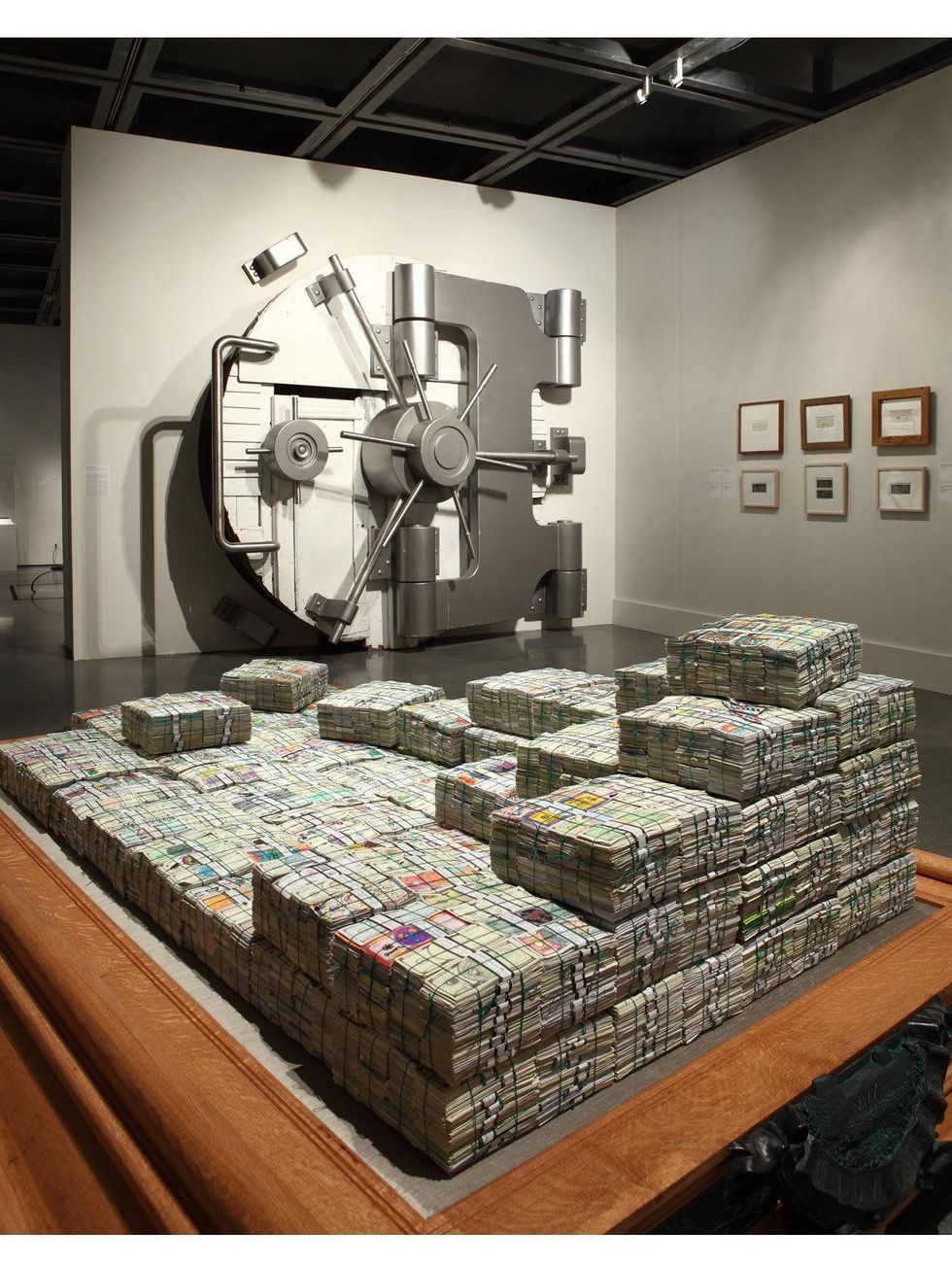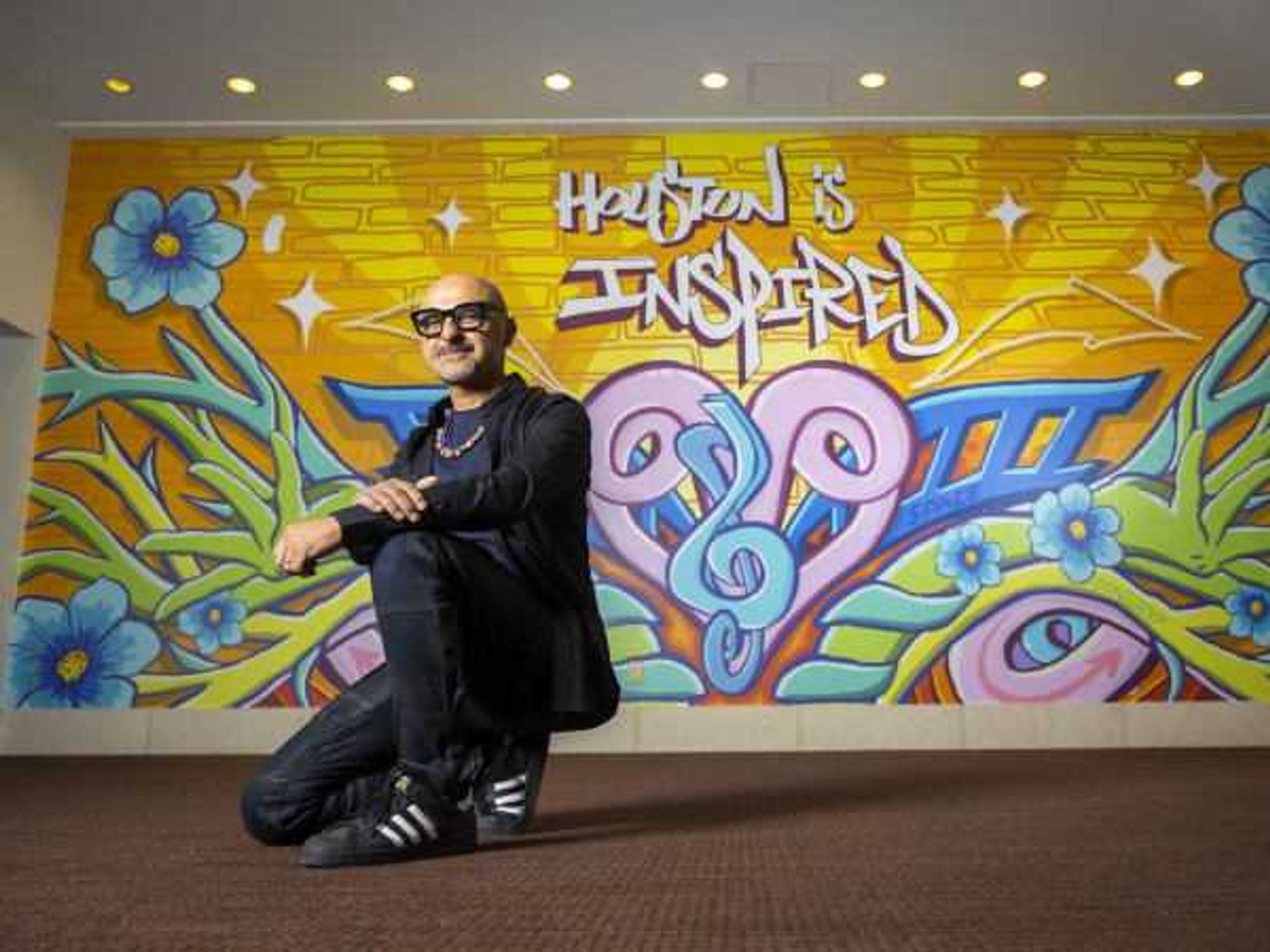The Art Files
Houston's own walking chill encyclopedia: Native son artist takes on guns, poisioning, Melrose Place & more
Houston-born conceptual artist Mel Chin was leveling when I met him at University of Houston’s Blaffer Art Museum. While he would spend the next half hour leveling with me about his lifetime of art making, when we were introduced, he was actually wielding a level while lining up pieces of Revival Field Diorama hanging on a wall.
Less than 24 hours before the opening of Rematch, a monumental Mel Chin retrospective spread across four Houston art institutions: The Contemporary Arts Museum Houston, the Blaffer, Asia Society Texas Center and the Station Museum of Contemporary Art, with some non-Rematch works thrown in at the Art League for good measure, Chin was pitching in to help. During our interview, as Chin and I moved through the galleries discussing soil remediation, lead contamination, the history of the Glock handgun, television soap operas, why he left Houston and why he always comes back, Chin would occasionally offer a suggestion to the Blaffer installers, followed by a “I hear you. It’s cool,” if said suggestion couldn’t be addressed at that moment.
Talking to Chin was a little bit like conversing with a very chill encyclopedia. His knowledge about a subject, especially a concept he has created art around, feels both microscopic and infinite. He uses variations on the word “transformation” when describing his art, and part of his process to transform an object or idea seems to be to learn everything about what it is and was before he pushes it into becoming something else.
“Everything is an opportunity to be engaged,” Chin explains when I asked him about his need to intensely understand a thing. “If I walk down the street, I’m a part of something. It obligates me to know as much as I can,” he says, but insisted that this is not an obligation for the artist in general, but is instead part of his “psychological makeup.”
Talking to Chin was a little bit like conversing with a very chill encyclopedia.
During our conversation, it was easy to jump with him through the microscope’s looking glass into a world which is our world, just transformed through the Chin psychological. Here are some of the stops along our journey.
Transforming the Earth
One gallery in the Blaffer’s portion of the retrospective focuses on Chin’s perhaps most famous art project, Revival Field, which is also an ongoing work of science experimentation, to see if certain plants, hyperaccumulators, could be used to clean contaminated soil. Chin spent years becoming an expert on not only ecology, but also on politics and public policy.
Democratizing Art
Another gallery is devoted entirely to Operation Paydirt and the Fundred Dollar Bill Project, Chin’s work to (literally) draw attention to childhood lead poisoning. The public is asked to bring their own creativity to individual Fundred dollar bills, thereby adding another piece of art to the pallet and another voice to the public chorus demanding from our leaders healthy communities free from lead.
The project began in New Orleans and has spread across the country. The Operation Paydirt team will be coming to Houston to talk to people perhaps in the schools or even in their homes. They hope to link with health care professional and lead poisoning prevention specialists.
Nighttime Soap Opera Is a Virus and That's a Good Thing
From 1995-97, a clandestine, yet very public art project took place on millions of television screens across America as the beautiful crazy-people of Melrose Place stood in front of, and even stabbed with, pieces of contemporary art. Chin began the GALA Committee project for a group of artists who would work “covertly with the writers and producers so we could say what they could not say,” and now thanks to border-crossing reruns those covert messages continue to spread throughout the world.
A Tale of Two Guns
Chin pairs the words "transform" and "covert" often, as he believes we are being negatively transformed in ways we are not aware of, as is the case of lead contamination, when a child’s very blood is infected. So some healing must also be done covertly.
“Sometimes the transformations we take as individuals can’t be on the surface or on your sleeve.” Chin says. “You have to get there yourself first and those are the profound transformations of change. Because your peer group is too strong or your support systems intense and you’re sensitive to not betraying them.”
Perhaps one of the most intense examples of that covert becoming is Chin’s rupturing that aura of power guns possess by transforming the inside of a Glock 9mm handgun into HOME y SEW 9, a fully functional gunshot trauma kit. There are only two of these works in existence one at the CAM’s portion of Rematch, but the other is at the Menil, until March, for the Experiments with Truth: Gandhi and Images of Nonviolence exhibition.
A Landscape Exclusively Houstonian
One of my favorite pieces in Rematch might have been one of most traditional, a large painting, untitled, but referred to as Terra Infirma. This early work is owned by the Museum of Fine Arts, is seldom seen and was not included in the earlier New Orleans or St. Louis Rematch exhibitions. Chin painted this darkly beautiful landscape of native plants and an ominous black pool during the early 1980s when there was a lot going on in his life. This was also coincidentally, or not, around the time of the oil bust.
“I’m so grateful that it’s turned into a real city. What I mean by real city is one of the most diverse cities in America now."
“Maybe I was getting too comfortable in Houston when I was working on this,” he ponders as we stare up. “At the same time there was tragedy within our family, murder, homicides, lots of things contributed to my departure, lot of things were happening,” and while he wouldn’t go into detail about those personal “happenings,” he does call the work “almost a going away” piece.
Chin has, of course, been back to his native soil many times, sometimes for very long periods, so now that he’s retrospecting what does he think of Houston today?
“I’m so grateful that it’s turned into a real city," he says. "What I mean by real city is one of the most diverse cities in America now. To walk down the street and hear the different languages is a joy to me because our existence is going to be dependent on how we communicate.
"To have that is a rare gift. To be in a rare gift is to be in a city that has transformed.”
Mel Chin, GALA Committee: In the Name of the Place (Artworks for Melrose Place by GALA Committee), 1995-1997, television episodes of Melrose Place exhibited as looped clips and depicting set props by GALA Committee with 120 artists, 150 props.
![Tarra Gaines Mel Chin retrospective January 2015 Melrose Place In the Name of the Place [artworks for Melrose Place by GALA Committee], 1995-1997 Television episodes of Melrose Place, exhibited as looped clips, depicting set props by GALA Committee [120 ar](https://houston.culturemap.com/media-library/tarra-gaines-mel-chin-retrospective-january-2015-melrose-place-in-the-name-of-the-place-artworks-for-melrose-place-by-gala-comm.jpg?id=30532171&width=980)


